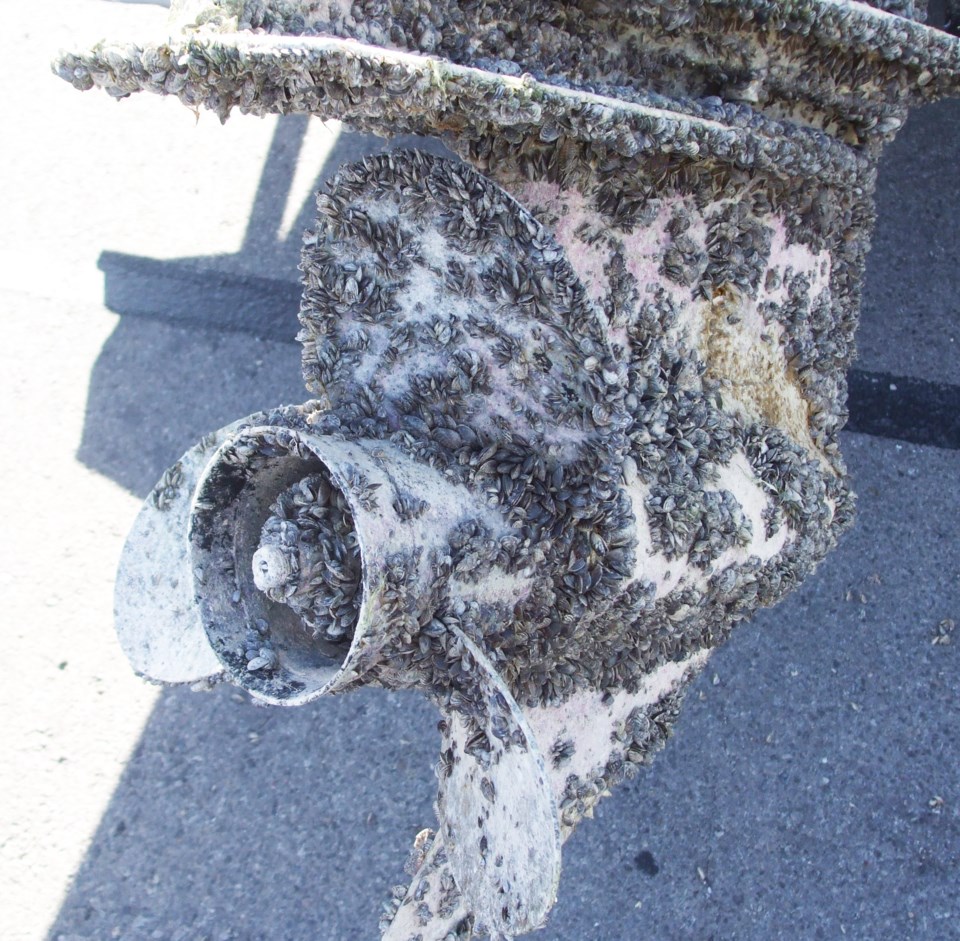What’ s three centimetres long and striped dark brown and has the potential to drastically affect the region’ s aquatic ecosystems? An invasive mollusk, that’ s what.
What’ s three centimetres long and striped dark brown and has the potential to drastically affect the region’ s aquatic ecosystems? An invasive mollusk, that’ s what.
As boating season arrives in the Lac La Biche area, boat owners are being reminded to check their watercraft for zebra and quagga mussels, two very similar species that have already overrun the Great Lakes region-and are moving west across the continent.
Natasha Downes, Alberta Parks’ heritage protection team lead for the northeast, says 68 boats were inspected at launch points in the local area during the May long weekend. Throughout the season, a roving team of inspectors will be checking boats in lakeside communities across the region to ensure the mussels don’ t find a home in the Lakeland, she says.
If they did find their way into Alberta’ s waterways, they’ d have no trouble establishing themselves here, she says.
“Zebra and quagga mussels like lakes that have high calcium levels so our lakes are very susceptible,” Downes told the POST. “One zebra mussel can create one million eggs in a year so they multiply exponentially.”
The mussels can attach themselves to almost any hard surface and can survive out of water for as long as a month if conditions are right, so the possibility of “hitchhiker” mollusks coming into the province on boats is very real, says Alberta Environment spokesperson Chara Goodings.
At this point, Alberta is still mussel-free, she says, but there have been close calls. Last weekend, a boat bound for Sylvan Lake was found to be contaminated with mussels. The boat was intercepted and thoroughly cleaned.
Boat inspections are now mandatory at special checkpoints on highways coming into the province.
“Right now, we’ re focusing on (boats) from the States because of all the snowbirds that are coming from mussel-infested areas,” said Goodings.
Arizona and Nevada, for example, are grappling with severe mussel infestations. The Great Lakes region is also home to a vast mussel population and the mollusks have been found as far west in Canada as Lake Winnipeg.
Bodies of water like Lac la Biche Lake and Beaver Lake would be right up the highly adaptable mussels’ alley.
“They would flourish,” Goodings said. “They’ re virtually impossible to eradicate once they get into a water body.”
And once they’ ve entered an aquatic ecosystem, they often become more than just a nautical nuisance. They have no natural predators in this part of the world so they reproduce rapidly-so quickly, in fact, that they’ ve been known to infiltrate and damage water-based infrastructure like pipes and water treatment plants.
It’ s been estimated that a zebra or quagga mussel infestation in Alberta would cost the province around $75 million annually.
The mollusks can also crowd out native plant and animal species-and can be hazardous to humans in the right circumstances.
“The mussels feed on plankton, which are a source of food for fish,” said Downes. “They affect aesthetics on beaches and shorelines and they have sharp edges, too.”
To keep the mussels at bay, provincial officials recommend that boat owners clean, drain and dry their watercraft at the end of each trip. That greatly reduces the risk of mussels or their larvae hitching rides into other regions.
For more information or to report concerns, call 1-855-366-BOAT (2628).
